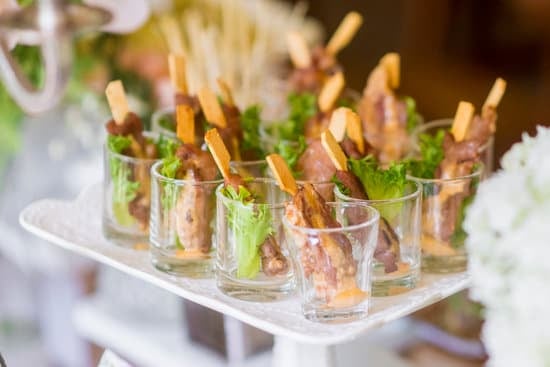Are you wondering how much white is acceptable to wear to a wedding? The debate around wearing white to weddings has been a hot topic in recent years, with many questioning the traditional etiquette of wedding attire. In this article, we will explore the history of wearing white to weddings, modern perspectives on this practice, the rules for wearing white, and ultimately answer the question of how much white is considered appropriate for wedding guests.
Traditionally, it was considered taboo for anyone other than the bride to wear white to a wedding. White has long been associated with purity and innocence, making it an exclusive color for brides on their special day. However, as fashion trends evolve and wedding norms shift, there is now a more relaxed approach to wedding attire etiquette.
With changing attitudes and evolving fashion trends, the guidelines for what is acceptable to wear as a guest to a wedding have become less rigid. In this article, we will delve into the history of the tradition of wearing white to weddings, discuss modern perspectives on this practice, and explore the rules and exceptions for wearing white as a guest. Let’s take a closer look at how much white is truly acceptable to wear to a wedding.
The History of Wearing White to Weddings
The tradition of wearing white to weddings dates back to the Victorian era, where Queen Victoria popularized the white wedding dress in 1840. Before this time, brides simply wore their best dress regardless of its color. However, the significance of white in wedding attire goes even further back, with ancient Roman brides wearing white to symbolize purity and innocence. This association with purity has carried on throughout history and across cultures, making it a widely accepted and cherished tradition.
White has long been associated with new beginnings, purity, and innocence, making it a perfect choice for a wedding dress. In many cultures, white represents the pure love and unity between two people as they embark on a lifelong journey together. Its timeless appeal and symbolism have made it the go-to color for brides around the world.
As times have changed and wedding traditions have evolved, so too have perspectives on wearing white to weddings. While it was once considered taboo for anyone other than the bride to wear white to a wedding, modern attitudes are more relaxed about this traditional etiquette. However, there are still some guidelines to consider when choosing how much white is acceptable to wear as a guest at a wedding.
Modern Perspectives on Wearing White to Weddings
In recent years, there has been a significant shift in attitudes towards wearing white to weddings. Traditionally, white was reserved for the bride as a symbol of purity and innocence. However, modern perspectives on wedding attire have evolved, leading to a more relaxed approach to the traditional etiquette surrounding white garments at weddings.
One of the reasons for this change in perspective is the increasing diversity in wedding ceremonies and celebrations. With couples incorporating their own cultural traditions and personal styles into their weddings, the strict adherence to traditional wedding attire has become less common. As a result, guests are now more likely to see variations of white in wedding attire without it being seen as a breach of etiquette.
Another factor influencing modern perspectives on wearing white to weddings is the evolving fashion trends. Designers and fashion influencers have been embracing non-traditional wedding attire, including colorful and unconventional dresses that challenge the notion of all-white wedding ensembles. This has had an impact on the way wedding guests interpret and select their own outfits for these events.
Overall, while there are still certain guidelines regarding wearing white to weddings, contemporary perspectives tend to be more flexible when it comes to acceptable levels of white attire options for guests. The key is to be mindful of the context and etiquette of the specific event. Below are some examples:
- A White Dress with Floral Patterns
- A Light-Colored Dress with White Accents
- Off-White or Cream-Colored Dress
Each of these options presents an acceptable level of white for a wedding guest’s attire, showing that there is room for interpretation within traditional dress codes. Ultimately, choosing an outfit with appropriate levels of white depends on factors such as the venue and dress code of the wedding.
Rules for Wearing White to a Wedding
When it comes to attending a wedding, there are several unspoken rules and etiquette that guests are expected to follow. These rules ensure that everyone feels comfortable and respected on the happy couple’s special day. One of the most debated topics regarding wedding attire is the question of how much white is acceptable to wear to a wedding.
Traditionally, wearing white to a wedding was considered a major faux pas, as it was believed to detract attention away from the bride, who is the star of the show. However, modern perspectives on this issue have evolved, and many people have adopted more lenient attitudes towards wearing white to weddings.
Traditional etiquette for wedding attire dictates that guests should avoid wearing any shade of white or off-white as a sign of respect for the bride. This rule stems from historical customs where brides would wear white gowns as a symbol of purity and innocence.
Guests wearing similar colors were seen as disrespectful and potentially trying to upstage the bride. While these traditional rules still hold weight for some people, there has been a shift in attitudes towards wearing white to weddings in recent years.
In modern times, the absolute ban on wearing white to weddings has become less stringent. Many contemporary couples embrace alternative approaches to their wedding attire that may include non-traditional colors or themed dress codes. As such, there is more flexibility in what guests can wear. However, it’s essential for individuals attending a wedding to approach their outfit choices with sensitivity and consideration towards the preferences of the couple getting married.
How Much White Is Acceptable to Wear to a Wedding
When it comes to attending weddings, the question of how much white is acceptable to wear can be a controversial topic. Traditionally, wearing white to a wedding was considered a major faux pas, as it was believed to overshadow the bride who typically wears a white gown. However, in recent years, attitudes towards wearing white to weddings have been evolving, and the once-strict etiquette around this topic is becoming more relaxed.
Traditional Etiquette and Rules
According to traditional wedding etiquette, guests should avoid wearing predominantly white attire to a wedding. This includes dresses, pantsuits, or even accessories such as hats or shoes that are primarily white in color. The reasoning behind this rule is that the bride should be the focal point of the day in her white gown. However, it’s important to note that these rules may vary based on cultural and regional traditions.
Modern Interpretations
In modern times, there has been a shift in perspective when it comes to wearing white as a wedding guest. Many fashion-forward individuals now embrace the idea of wearing off-white shades such as cream or ivory to weddings without causing offense.
Additionally, some brides have opted for non-traditional colored gowns, making it more acceptable for guests to wear white without overshadowing the bride. However, it’s crucial for guests to be mindful of the specific dress code and expectations set by the couple when deciding how much white is appropriate for a wedding outfit.
Varying Degrees of White Attire
When determining how much white is acceptable to wear to a wedding, guests should consider different degrees of whiteness in their attire. It’s generally safe for guests to wear outfits with subtle touches of white or patterns that incorporate white alongside other colors.
This might include floral patterns with small hints of white or accessorizing with a statement piece in white. On the other hand, completely avoiding head-to-toe bright or stark-white ensembles will ensure that the focus remains on the couple on their special day while still allowing guests some freedom with their attire choices.
Tips for Choosing White Wedding Attire
When attending a wedding and contemplating wearing white, it is essential to consider the specific guidelines and expectations when it comes to white attire. The first tip for choosing white wedding attire is to always defer to the wishes of the couple getting married. If they have explicitly indicated that they prefer guests to avoid wearing white, it’s best to respect their request and choose a different color.
Another important factor to consider when selecting white wedding attire is the dress code and venue of the event. For beach or casual outdoor weddings, lighter shades of white such as cream or ivory may be more acceptable. However, for formal or evening weddings, it’s best to opt for darker shades of white or incorporate other colors and patterns into your outfit.
It’s also crucial to ensure that your choice of white attire does not overshadow the bride on her special day. Avoid wearing all-white dresses or suits, especially those with bridal-style details such as lace, tulle, or long trains. Instead, opt for tasteful and understated pieces that complement the overall wedding theme without detracting from the bride’s spotlight.
Overall, when deciding how much white is acceptable to wear to a wedding, it’s essential to be mindful of the context and etiquette of the specific event. By considering the preferences of the couple, adhering to the dress code and venue appropriateness, and ensuring your attire does not upstage the bride, you can confidently select an appropriate and stylish white outfit for any wedding celebration.
Alternatives to Wearing White to a Wedding
When attending a wedding, it is important to be mindful of the traditional etiquette and rules when it comes to attire. For those who want to avoid wearing white to a wedding but still want to look stylish and appropriate, there are plenty of alternative colors and attire options to choose from.
One popular alternative to white for wedding guests is pastel-colored attire. Soft shades such as blush pink, light blue, lavender, or mint green are perfect choices for a wedding outfit that feels romantic and fresh without overshadowing the bride.
Another elegant option for guests looking for an alternative to wearing white is neutral-colored attire. Colors like taupe, champagne, or nude can create a sophisticated and timeless look that complements the overall aesthetic of the wedding while still adhering to traditional etiquette. Additionally, jewel-toned attire such as emerald green, sapphire blue, or deep plum can make a bold and stylish statement while avoiding the risk of being mistaken for the bride.
For those who want to add a pop of color to their wedding guest attire without wearing white, consider opting for vibrant shades like coral, fuchsia, or turquoise. These eye-catching colors can add a fun and festive touch to your outfit while steering clear of any confusion with the bride’s gown.
Ultimately, when choosing an alternative color for your wedding guest attire, it’s important to consider not only your personal style but also the specific dress code and overall theme of the event.
| Attire Option | Description |
|---|---|
| Pastel-Colored Attire | Soft shades like blush pink, light blue, lavender |
| Neutral-Colored Attire | Colors like taupe, champagne or nude |
| Jewel-Toned Attire | Emerald green, sapphire blue or deep plum |
Conclusion
In conclusion, the debate over how much white is acceptable to wear to a wedding continues to evolve as societal norms and fashion trends change. While traditional etiquette stipulates that wearing white to a wedding should be avoided to prevent overshadowing the bride, modern perspectives offer more flexibility in terms of acceptable white attire. Understanding the history and significance of wearing white to weddings can provide valuable insight into this ongoing discussion.
It is important for wedding guests to consider the context and specific dress code of each event when choosing their attire, as this will ultimately determine how much white is appropriate to wear. Additionally, individuals should also take into account the preferences of the couple getting married, as some may have strong feelings about guests wearing white on their special day.
Ultimately, while there are general rules regarding the amount of white that is acceptable to wear to a wedding, personal judgment and consideration for the overall tone of the event are also crucial factors. As fashion and traditions continue to evolve, it may be helpful for guests to prioritize respect for the couple and their celebration when making decisions about wedding attire.
Frequently Asked Questions
Can You Wear Any Amount of White to a Wedding?
It’s generally considered inappropriate to wear any amount of white to a wedding, as it can overshadow the bride who traditionally wears white. It’s best to choose another color for your outfit to show respect for the couple getting married.
Is It Impolite to Wear White to a Wedding?
Yes, wearing white to a wedding is often perceived as impolite because it can be seen as trying to compete with the bride or draw attention away from her. The focus should be on the couple getting married, so it’s best to avoid wearing white out of respect for them.
What Is Too Close to White for a Wedding?
Anything that could be mistaken for white, such as off-white, cream, or very light pastel colors, may be considered too close to white for a wedding. It’s important to choose a different color outfit so there’s no chance of causing any discomfort or offense to the bride on her special day.

I have been involved in marriages for over 20 years helping couples and singles understand more about them.





